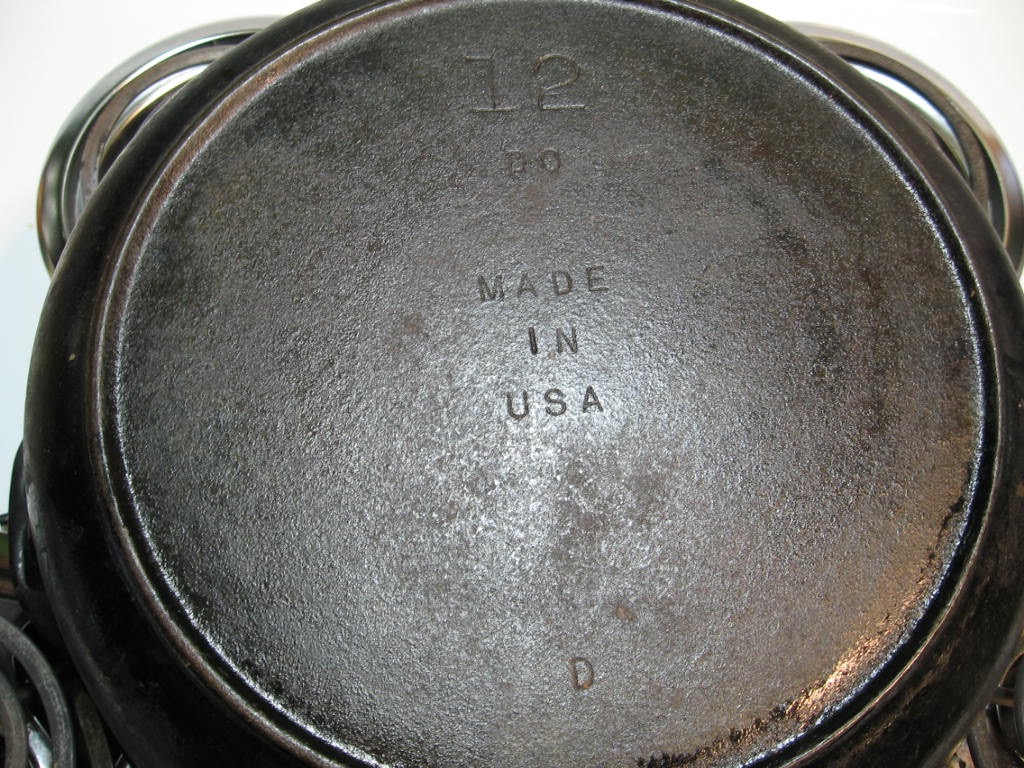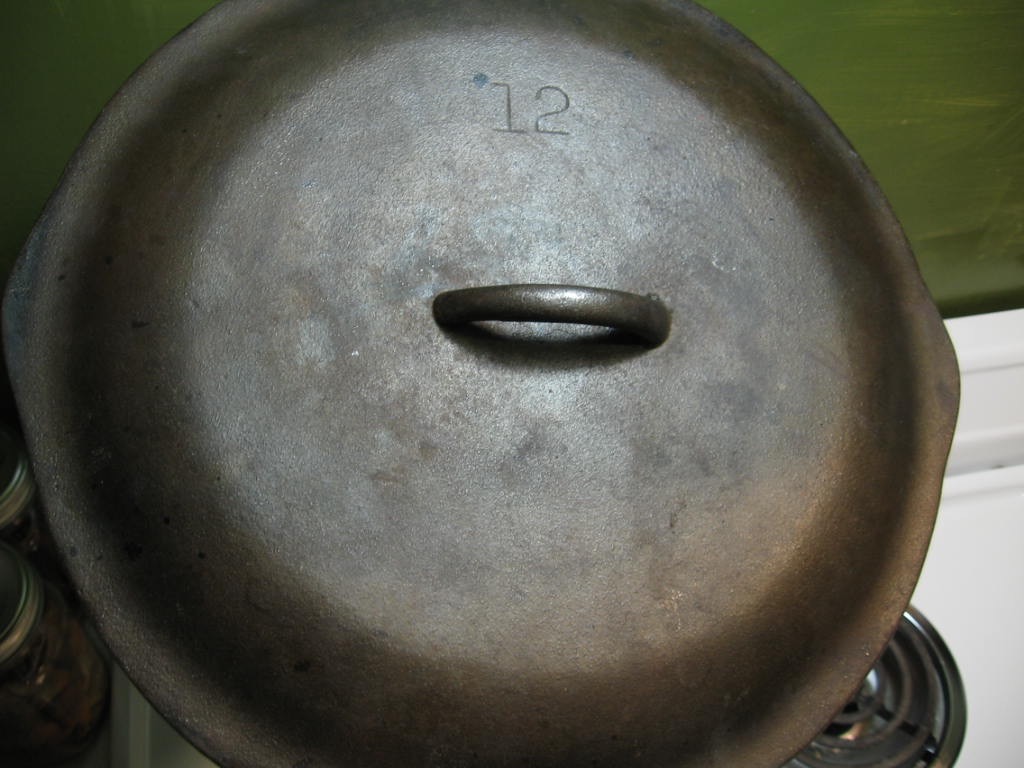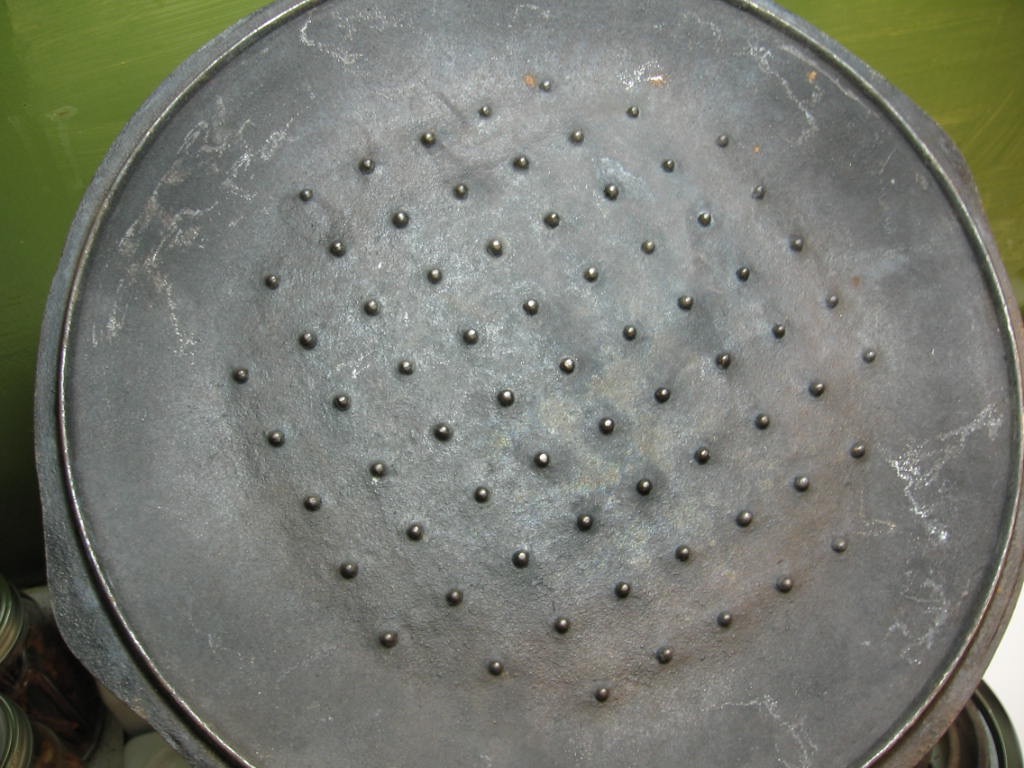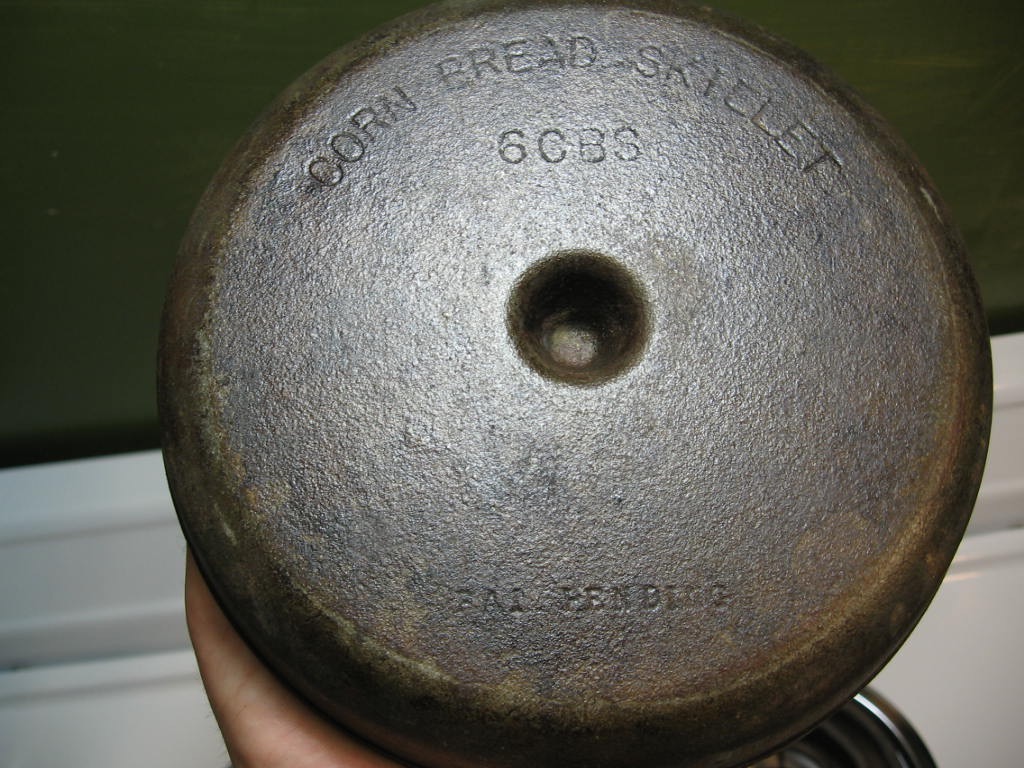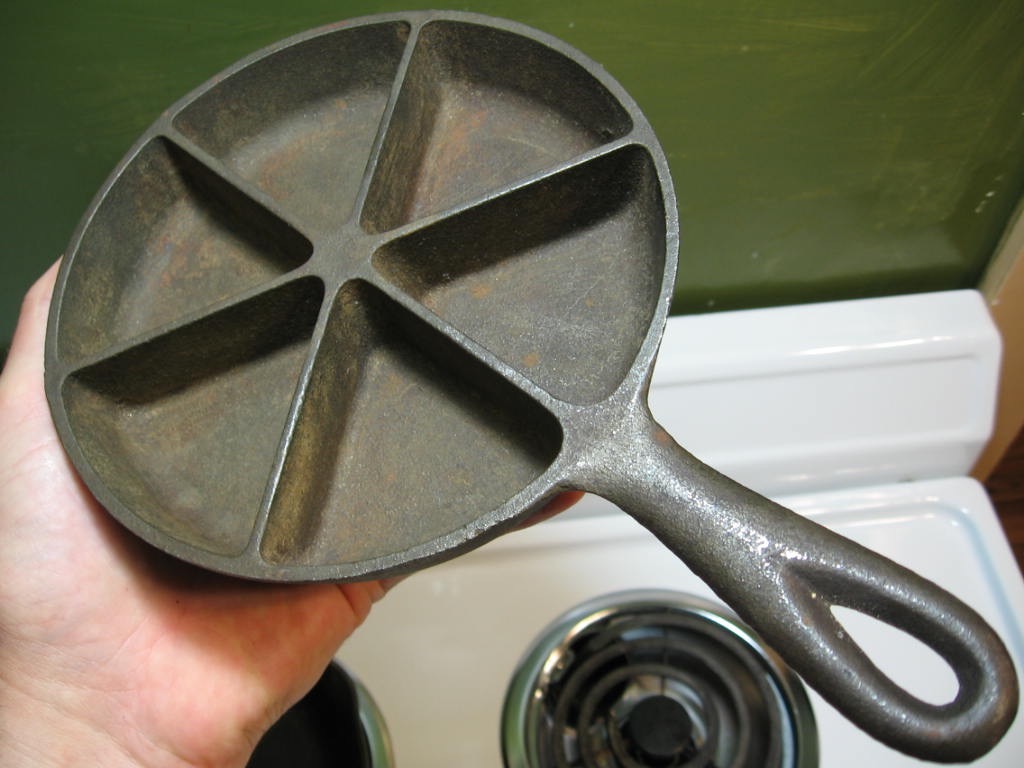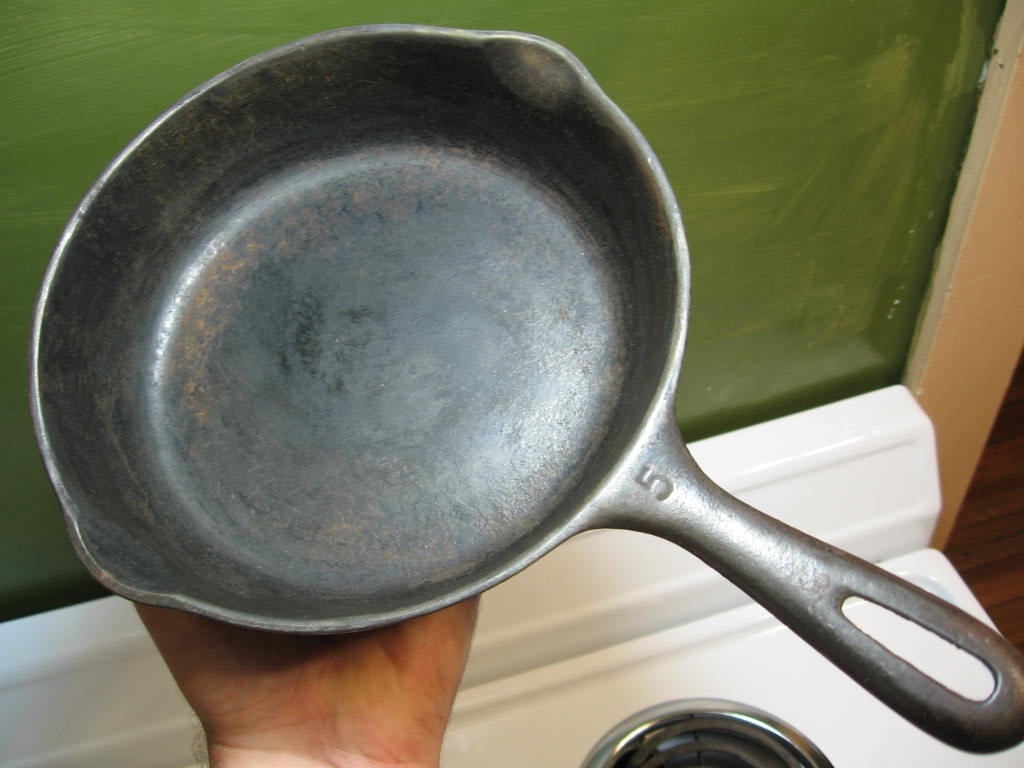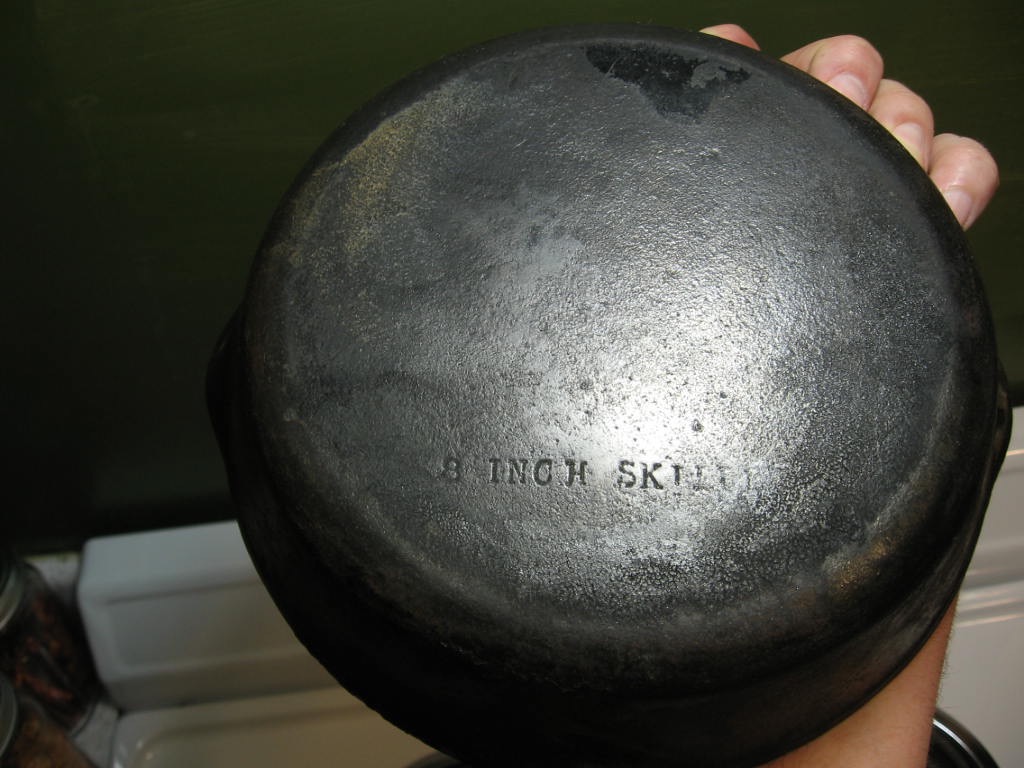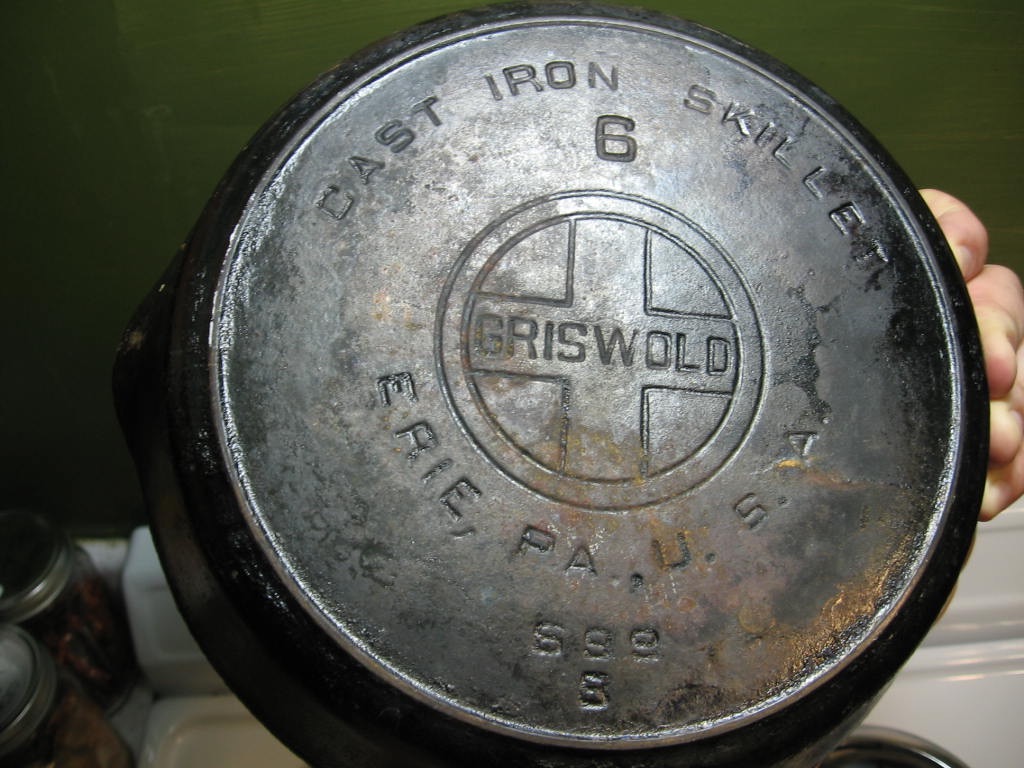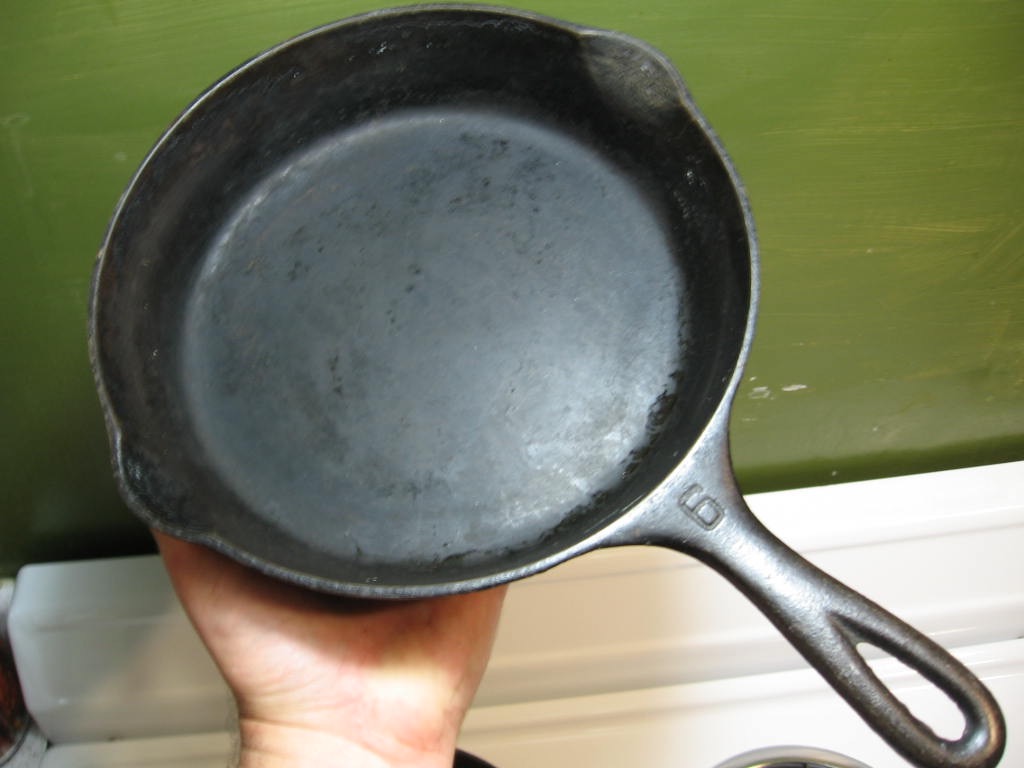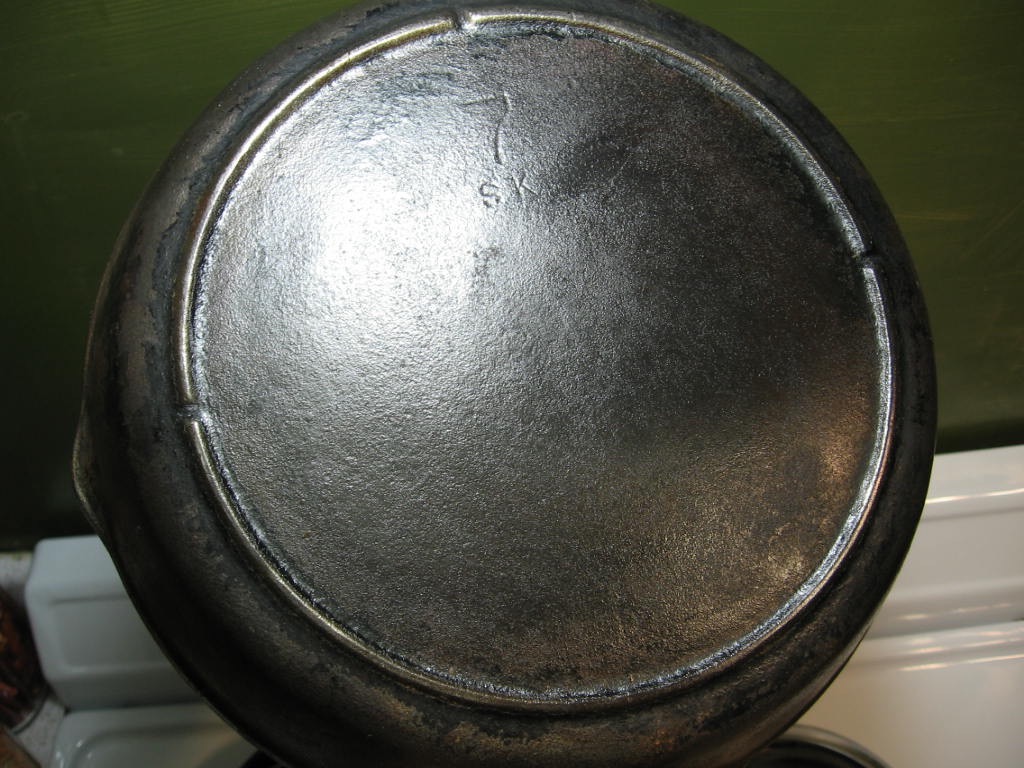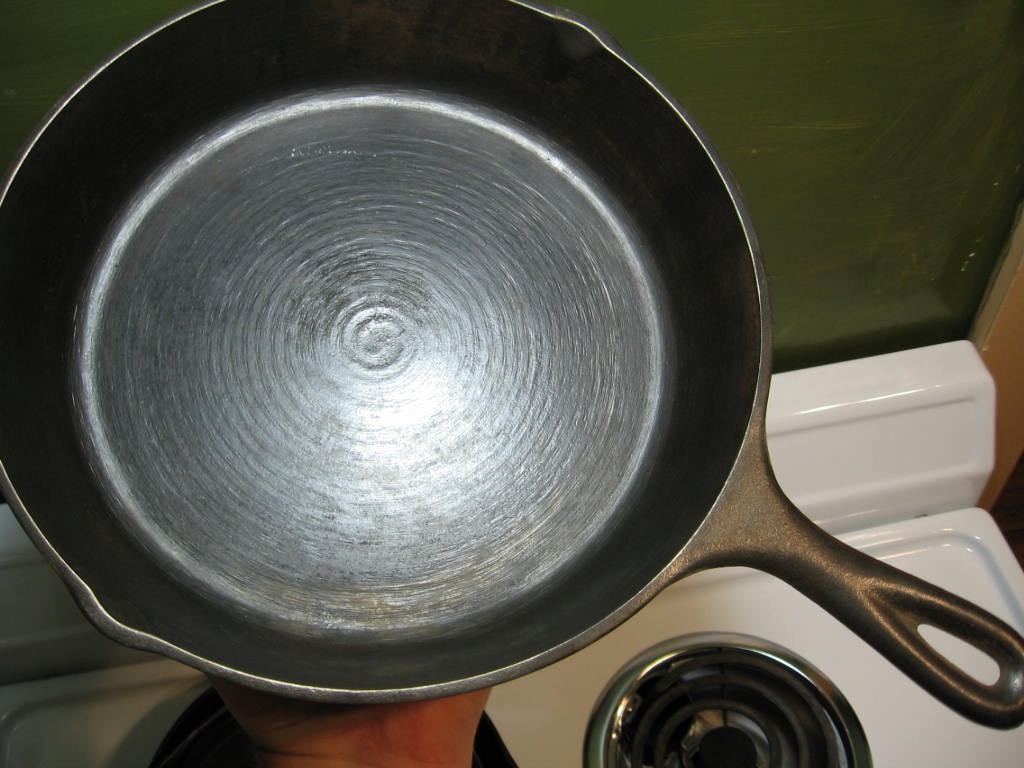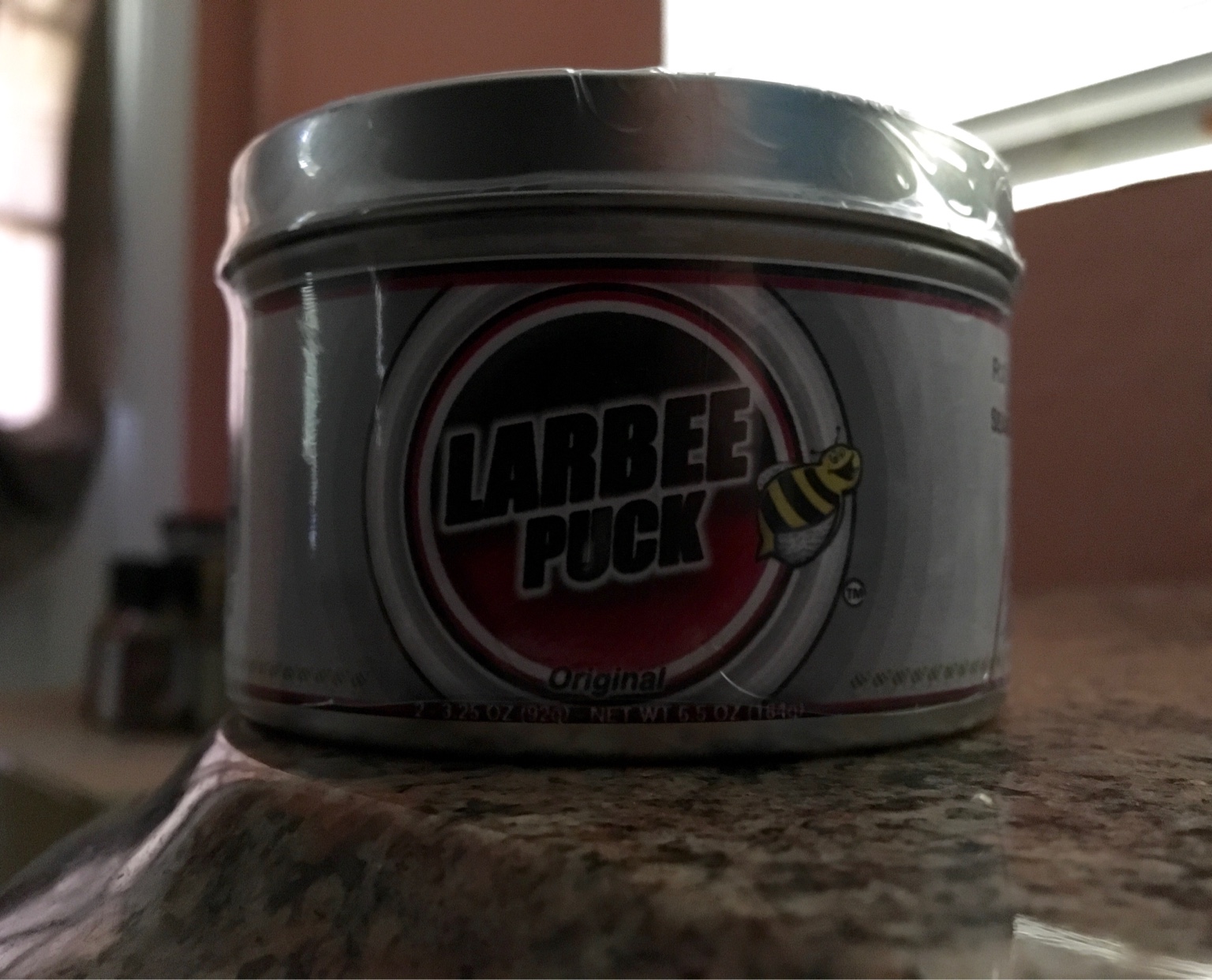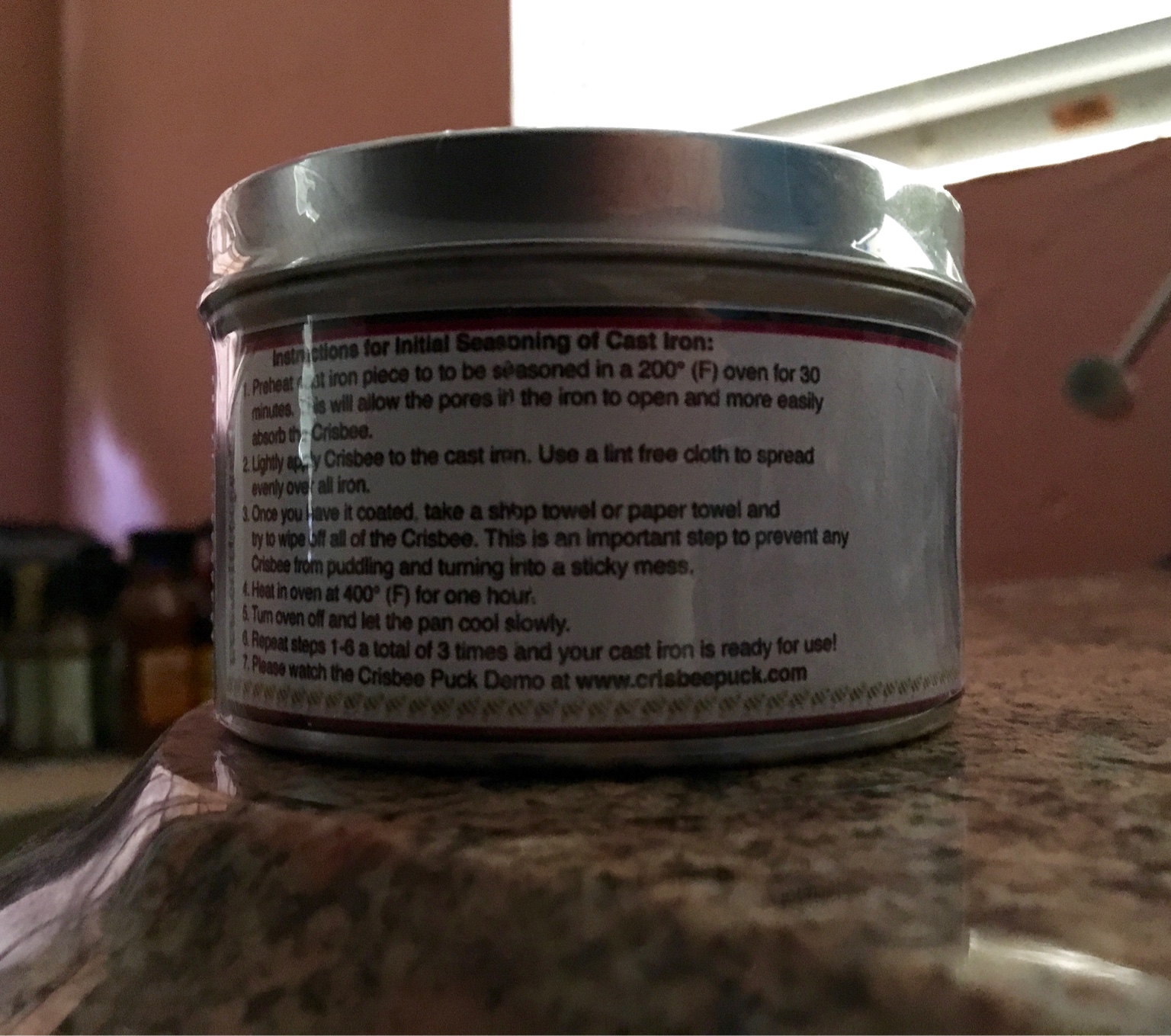I use canola (vegetable oil) for seasoning. You won't need a self cleaning oven. Get a spray can of oven cleaner.
The No. 6 Griswold is small and will easily fit in a plastic grocery store bag. Work outdoors and have sturdy plastic gloves on. The oven cleaner is corrosive.
Give the skillet a liberal spraying with the oven cleaner and put it in a plastic bag. Even double bag it and keep the bag sealed. Let the thing sit for a couple of days.
Hose off the skillet. There will be a funky mess as all the old grease from your grandmother's cooking comes off. Scrub the skillet starting with a plastic tuffy thing. This will lift off most of the grease and take it down to bare metal. Any places that are being stubborn, use very fine steel wool. If need be, use a wire brush. Your skillet looks good with very light rust so you may not have to use a wire brush.
You will probably need to reapply the oven cleaner and repeat the process.
Once you are down to bare metal, wipe dry and put in a cold oven then warm to, say, 250F for 20 minutes. This drives off any water that has penetrated the surface of the iron. Let cool.
Apply canola oil and wipe it all off (if you don't do this, you'll end up with your sticky, tacky mess!). Put skillet in cold oven then heat to 425F. Let cool in oven. Reapply oil and, again, wipe it all off. You may find that your cleaning rag looks rusty, but it's difficult to get it all off.
Your skillet should look good at this point, but typically, I reapply oil and reheat to 425F a second or third time. I usually wait until I'm cooking something in the oven for the second or third applications, but that's only because I don't want to keep heating up the house just for the skillet.
Remember to wipe off all the oil so you avoid the sticky tacky surface.
Please post a pic of your cleaned skillet. It should look great!
